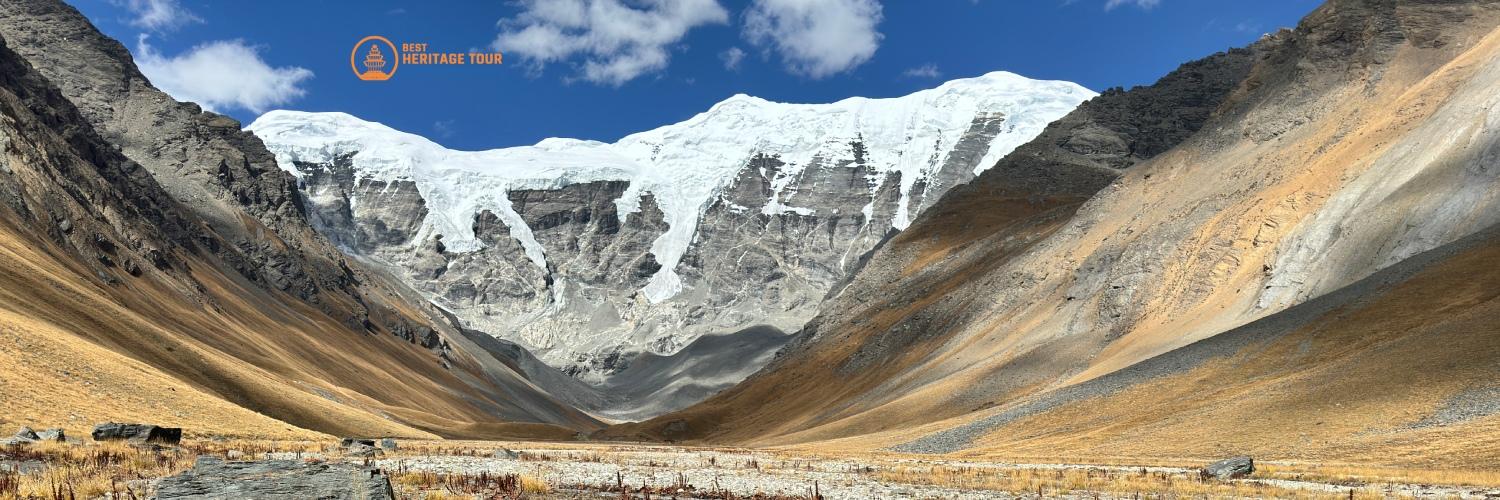Tucked away in the remote northwest corner of Nepal, the Dolpo Region is a hidden gem for trekkers and cultural explorers alike. This vast, rugged landscape is famous not only for its spectacular high-altitude scenery but also for its unique cultural heritage - a blend of Tibetan Buddhism and the ancient Bon religion, practiced by the resilient communities living here for centuries.
For those seeking an off-the-beaten-path adventure, Dolpo offers a rare combination of pristine wilderness, spiritual richness, and the chance to witness elusive wildlife like the majestic blue sheep (bharal). It is a destination that challenges the body, nourishes the soul, and rewards the curious traveler with unforgettable memories.
Where is Dolpo?
Dolpo lies in the remote western Himalayas of Nepal, bordering Tibet to the north and west. The region is roughly divided into two parts:
-
Upper Dolpo: Characterized by arid, high-altitude plateaus that rise above 4,000 meters. It is home to ancient monasteries, sacred lakes like the famous Phoksundo Lake, and sparse nomadic communities. This is where the Bon religion has maintained a strong presence alongside Tibetan Buddhism, creating a unique cultural tapestry.
-
Lower Dolpo: Situated at lower altitudes, Lower Dolpo consists of small villages, agricultural lands, and access points like the airstrip at Juphal. This area acts as the gateway to the high wilderness of Upper Dolpo.
The entire Dolpo region is protected under Shey Phoksundo National Park, Nepal’s largest protected area, preserving its rich biodiversity and cultural heritage.
Why Trek Dolpo?
Dolpo stands apart from other trekking destinations in Nepal for several reasons:
-
Cultural Uniqueness: The region is one of the last strongholds of the Bon religion, a pre-Buddhist spiritual tradition unique to Tibet and Dolpo. Monasteries such as Shey Gompa showcase this blend of Bon and Buddhist practices. Trekkers can witness traditional rituals, festivals, and a way of life untouched by modern tourism.
-
Spectacular Natural Beauty: From the sparkling turquoise waters of Phoksundo Lake, surrounded by dramatic cliffs, to the vast, dry alpine deserts dotted with wildflowers and hardy shrubs, Dolpo’s landscapes are breathtakingly diverse.
-
Rare Wildlife: The elusive blue sheep, snow leopards, musk deer, and Himalayan wolves inhabit this rugged wilderness, making Dolpo a prime destination for wildlife enthusiasts and photographers.
-
Challenge and Adventure: Trekking here involves crossing high mountain passes like the Kanji La (5,160 m), dealing with high altitude, and navigating remote trails. It’s a true adventure for seasoned trekkers looking to escape the crowds and experience something deeply authentic.
How to Get There?
Reaching Dolpo requires careful planning due to its remoteness and limited access:
-
By Air: The easiest and most common way is to fly from Kathmandu to Juphal, a small mountain airstrip in Lower Dolpo. Flights can be irregular due to weather conditions.
-
By Road and Trekking: From Juphal, travelers can take a jeep on rugged dirt roads, but much of the journey is on foot. Treks typically start at villages like Dunai or Juphal before heading into Upper Dolpo.
-
Trekking Routes: The trek includes high passes, deep valleys, and visits to traditional villages. The most famous route crosses the Kanji La Pass, offering stunning views of the Himalayan ranges and the Tibetan plateau.
Best Time to Visit Dolpo
The best trekking seasons are:
-
Spring (March to May): The weather warms, and wildflowers bloom across the alpine meadows, making it a scenic and pleasant time to trek.
-
Autumn (September to November): Clear skies and stable weather make autumn ideal for panoramic mountain views and comfortable trekking.
-
Winter: Generally very harsh with heavy snow and freezing temperatures, so trekking is not recommended unless you have extensive high-altitude experience and equipment.
Because of Dolpo’s high altitude and dry climate, it experiences more extreme weather than many other trekking areas in Nepal, so preparation is key.
What to Expect on Your Trek?
-
Altitude and Physical Challenge: The region’s terrain is challenging, with long, steep ascents and high passes over 5,000 meters. Proper acclimatization and fitness are essential.
-
Accommodation and Facilities: Lodging is basic and mostly homestays or simple teahouses. Amenities like electricity, internet, and hot showers are limited or non-existent in Upper Dolpo.
-
Cultural Experiences: Trekkers will interact with Tibetan-speaking communities that maintain centuries-old customs, traditional clothing, and spiritual practices. Festivals and rituals provide a window into this preserved culture.
-
Permits and Regulations: A Restricted Area Permit (RAP) is required to enter Dolpo, along with a permit for Shey Phoksundo National Park. Treks must be arranged with licensed agencies and guides for safety and compliance.
Dolpo Highlights to Explore
-
Phoksundo Lake: This stunning glacial lake is a highlight of any Dolpo trek. Its vivid turquoise waters, surrounded by cliffs and forests, make it a natural wonder and sacred site for locals.
-
Shey Monastery: An ancient monastery that is central to both Bon and Buddhist traditions, offering insight into local religious life.
-
Kanji La Pass: A challenging but rewarding high mountain pass with sweeping views of Dolpo’s wilderness.
-
Traditional Villages: Visiting villages like Ringmo and Namgung lets trekkers experience authentic Tibetan culture, traditional homes, and hospitality.
Conclusion
For those seeking a profound journey into one of Nepal’s most remote and culturally rich regions, Dolpo is a treasure waiting to be discovered. The region’s blend of natural grandeur, spiritual heritage, and rare wildlife creates an unmatched trekking experience that challenges the body and enriches the mind.
If you dream of walking in the footsteps of ancient monks, spotting elusive blue sheep on rocky cliffs, or simply immersing yourself in a world far removed from modern hustle, Dolpo awaits your exploration.
Plan Your Dolpo Trek with Best Heritage Tour
Embark on your unforgettable Dolpo adventure with Best Heritage Tour - your trusted partner for authentic, safe, and well-organized treks.
Website: www.bestheritagetour.com
Email: info@bestheritagetour.com / bestheritagetour@gmail.com
Phone/WhatsApp/Viber: +977-9851149197
Office: Thamel Marg, Kathmandu, Nepal
Author: Best Heraitage Tour
Date: 5th August, 2025



